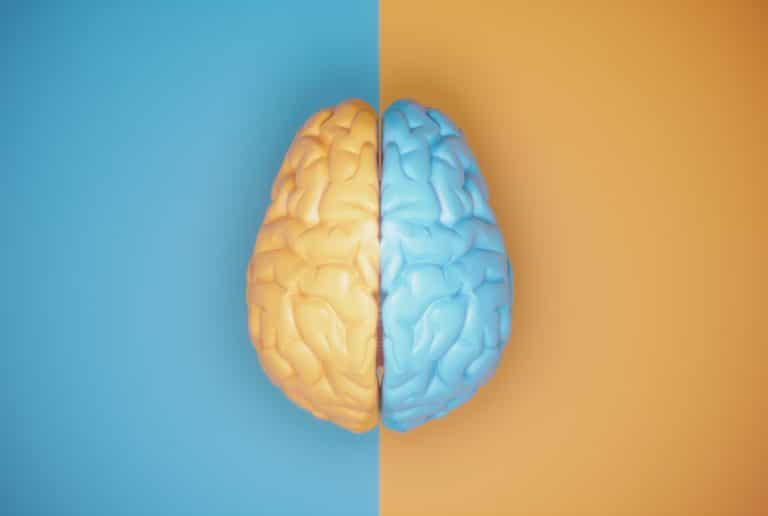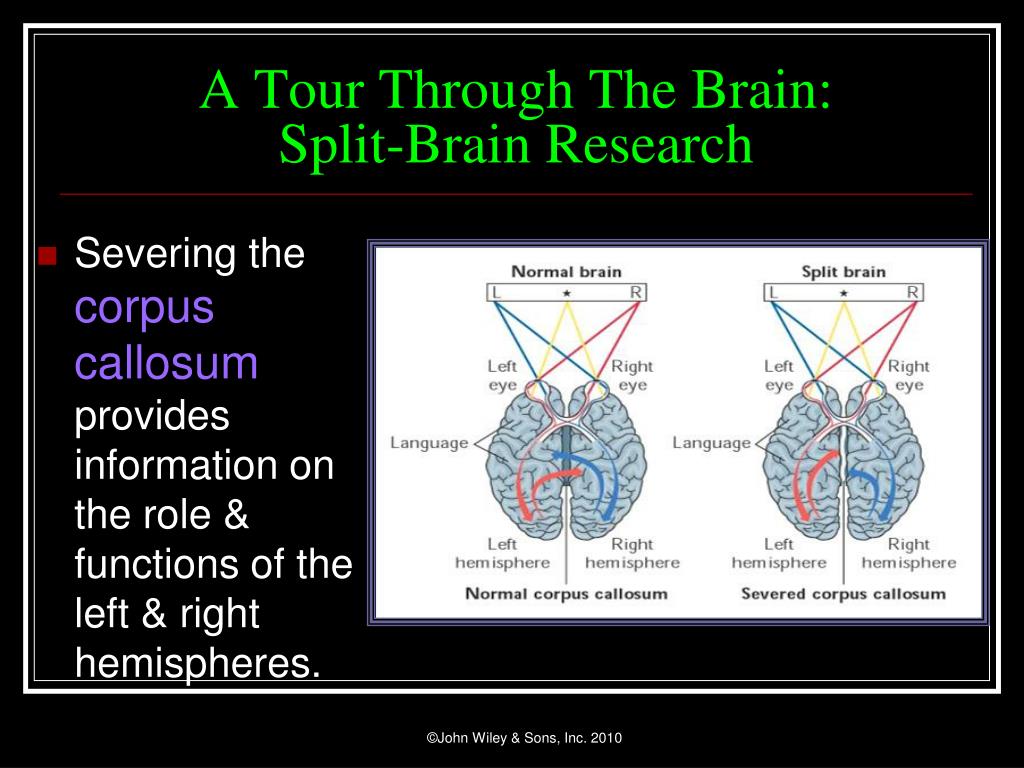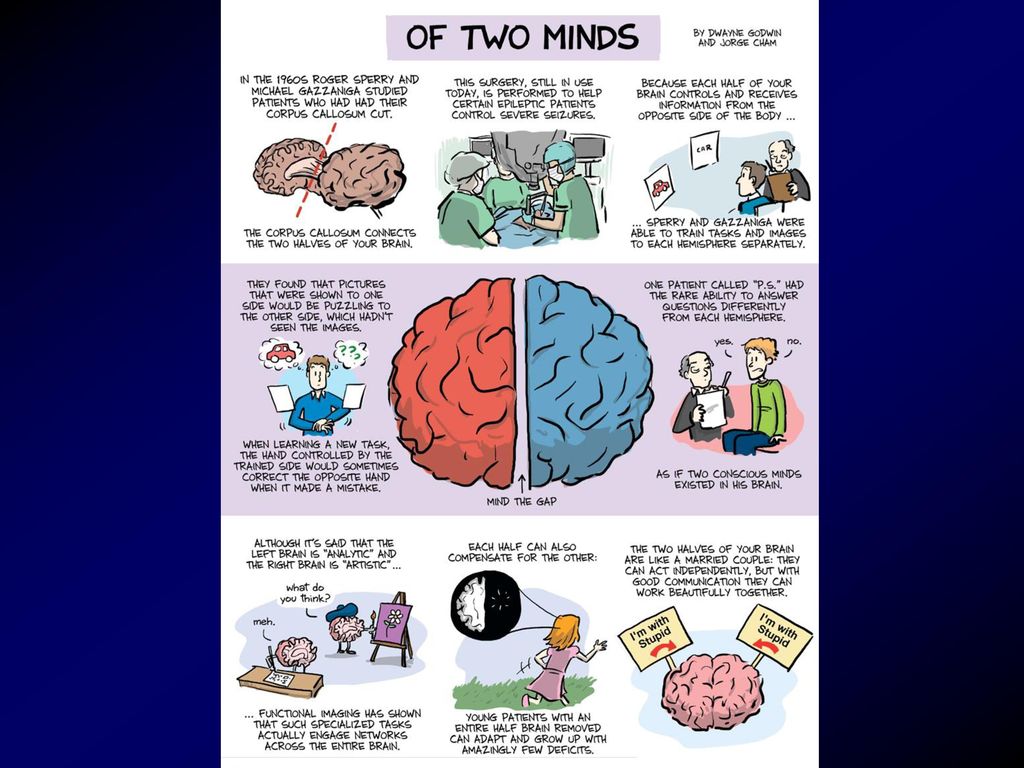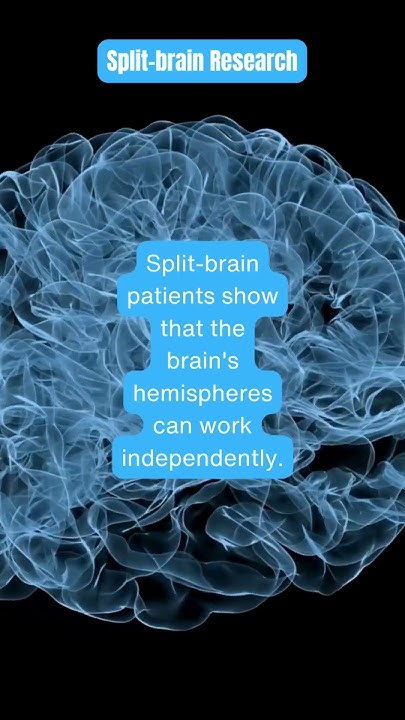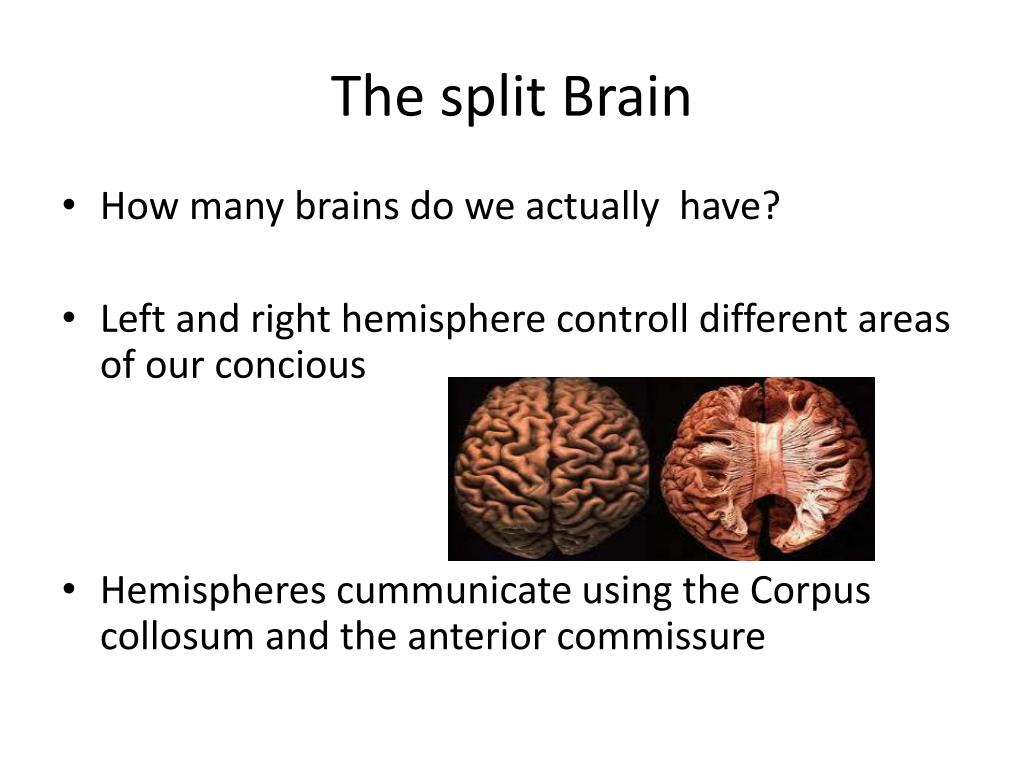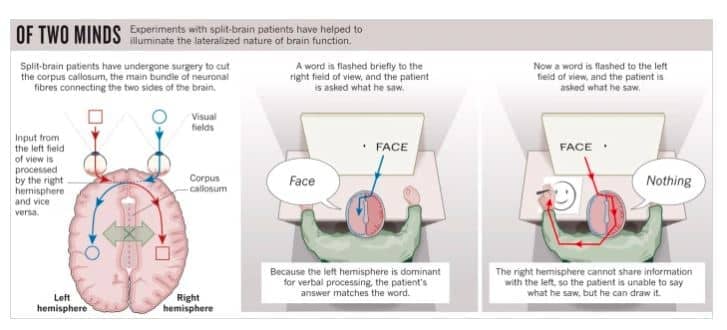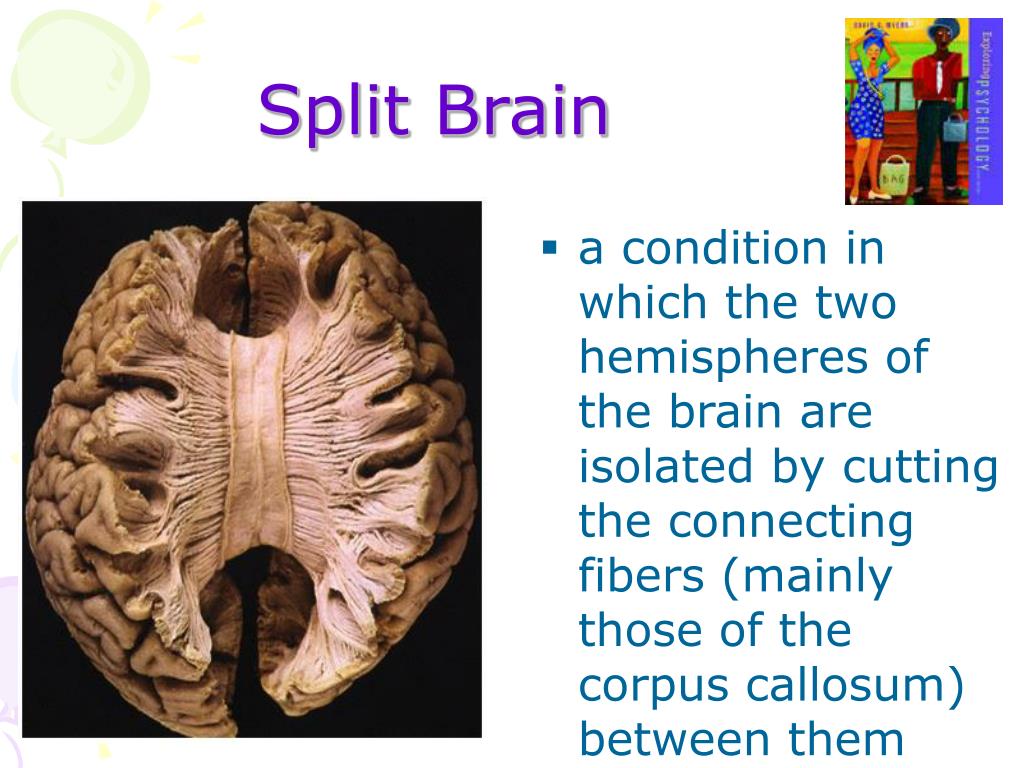Split Brain Research Demonstrates What Important Aspect Of Brain Function

For decades, the study of individuals with split brains, a condition resulting from the severing of the corpus callosum, the main band of nerve fibers connecting the two hemispheres of the brain, has provided invaluable insights into the fundamental nature of consciousness and cognitive processing. Recent research continues to build upon this foundation, further illuminating the brain's remarkable capacity for independent processing and specialization within each hemisphere.
These studies shed light on the crucial aspect of lateralization of brain function, demonstrating how specific cognitive tasks and abilities are often predominantly localized to one hemisphere over the other. This specialization allows for greater efficiency and complexity in information processing, ultimately shaping our perception, behavior, and overall understanding of the world.
The story of split-brain research began in the mid-20th century. It primarily focused on patients who had undergone a commissurotomy, a surgical procedure to sever the corpus callosum, typically to alleviate severe epileptic seizures. While this procedure effectively reduced the frequency and intensity of seizures, it also created a unique opportunity for scientists to study the independent functioning of each hemisphere.
Pioneering work by researchers like Roger Sperry and Michael Gazzaniga in the 1960s and 70s revealed striking differences in the capabilities of the left and right hemispheres. Sperry's work, which earned him the Nobel Prize in Physiology or Medicine in 1981, demonstrated that the left hemisphere is typically dominant for language processing, logical reasoning, and analytical thinking.
Conversely, the right hemisphere was found to excel in spatial reasoning, facial recognition, emotional processing, and artistic abilities. These initial findings laid the groundwork for decades of subsequent research, continually refining our understanding of hemispheric specialization and the integrated nature of brain function.
Current research is delving deeper into the nuances of hemispheric interaction and the compensatory mechanisms that emerge following a commissurotomy. Using advanced neuroimaging techniques such as fMRI and EEG, scientists can observe real-time brain activity and identify the specific regions involved in various cognitive tasks in split-brain patients.
One key area of investigation is the concept of consciousness. Split-brain patients often exhibit behaviors suggesting that each hemisphere possesses its own independent stream of consciousness. For instance, a patient might select an object with their left hand (controlled by the right hemisphere) while verbally denying having seen it (due to the left hemisphere's language dominance).
This raises profound questions about the nature of self-awareness and the integration of sensory information across the two hemispheres. Researchers are exploring how these independent streams of consciousness interact, compete, or cooperate to shape our overall subjective experience.
Studies are also focusing on the plasticity of the brain following a commissurotomy. While the severance of the corpus callosum initially disrupts communication between the hemispheres, the brain often adapts over time.
Researchers are investigating the neural mechanisms underlying this adaptation, including the strengthening of alternative pathways for interhemispheric communication. This plasticity highlights the brain's remarkable ability to reorganize and compensate for neurological damage.
The implications of split-brain research extend far beyond the realm of pure neuroscience. Understanding hemispheric specialization can inform educational strategies, rehabilitation programs, and even our approach to artificial intelligence.
For example, recognizing the strengths and weaknesses of each hemisphere can help educators tailor their teaching methods to optimize learning outcomes. Similarly, in rehabilitation settings, understanding how the brain adapts after injury can guide the development of more effective therapies.
Furthermore, the principles of hemispheric specialization are being explored in the field of artificial intelligence. By designing AI systems that mimic the distributed processing capabilities of the human brain, researchers hope to create more robust and adaptable artificial intelligence.
The ongoing study of split-brain patients continues to provide invaluable insights into the fundamental nature of brain function and consciousness. By examining the independent capabilities of each hemisphere and the compensatory mechanisms that emerge following a commissurotomy, scientists are gaining a deeper understanding of the remarkable complexity and plasticity of the human brain.
While the condition is rare, the research stemming from it has a broad impact on our understanding of how the brain works and how we can improve cognitive function. This research reaffirms that the brain is not a monolithic entity but a dynamic and multifaceted organ, capable of independent processing and integrated function, with implications that reach far beyond the laboratory.
